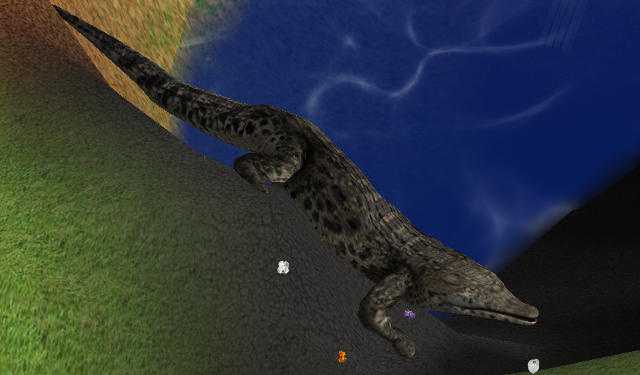
(This is a follow up to my blog entry here: https://www.gamedev.net/blogs/entry/2264506-matching-feet-to-terrain-using-ik/ )
This is a quick one just to show progress with getting 4 legged creatures matched to the terrain. While it was quite quick to get 2 legged creatures matching their feet to terrain using IK, 4 legged creatures has proved to be a whole other ball game entirely.
The few examples I've seen of 4 legged IK on the web have been using full body iterative solutions, so maybe I should be going this way. However using what I already had working I've so far been staying with the simple analytical solution for the legs, and using some maths and forward kinematics for the rest of the body.
First thing I did was try changing the pitch of the torso. I have been using a rotation based around the pelvis, not sure if this is the best approach but it seems to look rightish. Of course in real life you do not always hit a slope head on, so I wanted to be able to roll the torso too.
As well as this there is a twist in the spine so the body can follow the terrain better. A stiff spine looks very rigid (but is simpler). Then it is a case of lining up the legs to compensate for gravity (this isn't always switched on) and doing the IK legs to the terrain under each foot.
I've had quite a lot of problems with feet not being long enough to reach the ground, particularly with the short legged crocodile. You sometimes have to move the belly up to not hit the ground, but then the legs are too short to hit the ground!
As well as the central body there is also a forward kinematic system for moving the head and the tail.
It has been very difficult making things generic (fixing one thing on the crododile would break the elephant and vice versa) but I am getting there. There are also other creatures which are semi 4 legged (the monkey and chimp) but those are easier for the system to calculate. There are still some bugs of feet going through ground, and glitches, but it doesn't have to be perfect.




Very nice! How much "setup by artist" does it need? I guess that you are trying to make it as generic as possible to be out of the box? I also want to get down to implement it one day.